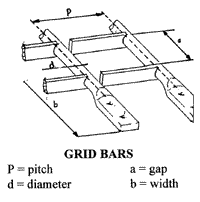Dr. Bob, “I notice that KPR carries 9 different pitches of digging chain with various coverings, bar types and diameters. How do I decide what pitch and type of chain to use in my harvester?”
This is such an important question that I am answering it over three Digger issues.
In the first issue on this subject, I offered some definitions – chain pitch is the center-to-center spacing of rods and the drop-though opening is the open distance between rods. I also discussed how to match chain pitch to the type of crop and conditions – remember to consider the minimum size and overall shape of the crop, the soil type and moisture levels at harvest, and the position of the chain in the harvester. Lastly, you may recall that most people err by selecting too narrow a pitch chain.
In the second issue, I introduced the 9 different chain pitches for AMAC harvesters and windrowers. I mentioned that the first chain on the harvester (digging chain) normally has uncoated, plain steel bars, while the second chain (sieve chain) typically has rubber-coated bars. When the harvester is operated properly, the mat of soil drops through at the end of the digging chain, and the rubber-coated sieve chain offers bruise protection to the relatively clean crop.
Now in the final issue on this subject, I will discuss the different types of chain coverings and bar styles. AMAC harvesters are used on different crops and soils; digging depth varies also. A balance between length of service and damage minimization is achieved by selecting the correct bar styles and coverings.
If your machine needs to dig deeply or in rocky conditions, you should select a 12 mm (1/2") bar thickness for your digging chain – the standard bar diameter is 10.5 mm (7/16"). This heavier bar is considerably more durable.
A dodged bar pattern is ideal for spherically shaped crops such as onions, where rollback can cause damage. Dodging patterns can be specified to the client's liking, but one bar up and the next two down works well to create pockets or cradles where the crop can be held and prevented from rolling down the digging chain.
A third type of chain is the square or grid pattern. The main bars are positioned at wide pitches of 42, 56, 72, or 84 mm (1.65", 2.2", 2.8", or 3.3"). Welded at right angles are short pieces of metal giving the chain a square mesh pattern (see figuree). The welded pieces are just short of the adjacent bar, so the chain can pass over and around drive rollers. Depending on the size pattern, the resulting grid provides drop-through openings of 33 to 76 mm (1.3" to 3") square. A square pattern chain is ideal in the sieve chain position when digging cylindrically shaped crops under cloddy or stony conditions. The crop is supported on the grid, but clods and stones pass through. When using a standard chain with an equally wide pitch, you risk the elongated crop falling between the parallel bars.
 Once a bar style is chosen, coverings are specified to match needed tenderness for the crop versus covering durability and length of service. Soft and gentle coverings are great for the crop, but typically wear out faster. Soft bar coverings are usually placed in the rear-most position of the harvester, where soil abrasion is minimized. A cost to benefit approach should be used to select among the various coverings, ranked as follows in decreasing order of durability: PVC, soft rubber, and air-cushion rubber.
Once a bar style is chosen, coverings are specified to match needed tenderness for the crop versus covering durability and length of service. Soft and gentle coverings are great for the crop, but typically wear out faster. Soft bar coverings are usually placed in the rear-most position of the harvester, where soil abrasion is minimized. A cost to benefit approach should be used to select among the various coverings, ranked as follows in decreasing order of durability: PVC, soft rubber, and air-cushion rubber.
I hope that this series on chain pitches, bar types, and coverings has been helpful. Selecting the correct chain pitch and type is critical to achieving satisfaction with your harvester. Please ask for assistance from us when you need to make these decisions.
|

|
 Similar to other advice columns, “Dr. Bob” may be able to help answer your questions or concerns regarding the equipment KPR sells.
Bob Rietveld has over 25 years of hands-on experience operating specialized vegetable equipment.
In case you were wondering, Dr. Bob received his Ph.D. from Purdue University.
Similar to other advice columns, “Dr. Bob” may be able to help answer your questions or concerns regarding the equipment KPR sells.
Bob Rietveld has over 25 years of hands-on experience operating specialized vegetable equipment.
In case you were wondering, Dr. Bob received his Ph.D. from Purdue University.
|

